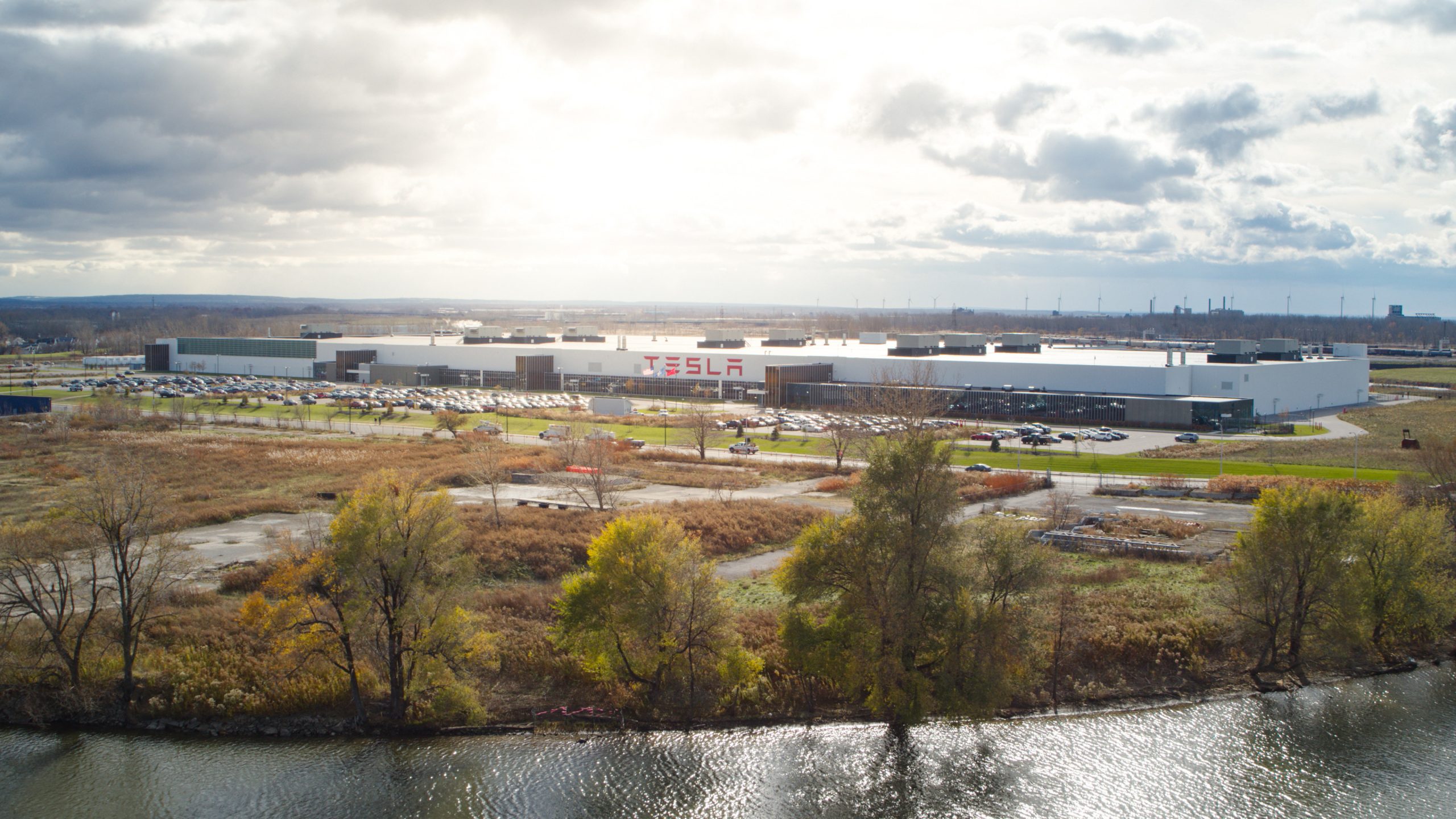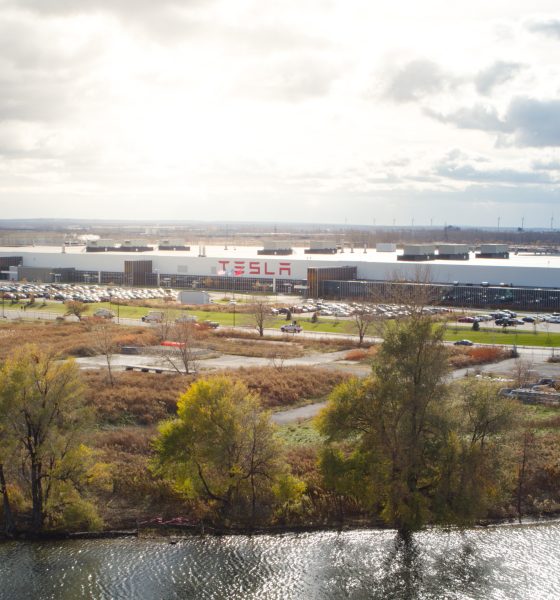

News
Tesla Giga New York faces racism allegations: report
Tesla Giga New York employees have alleged that they routinely faced racism while working at the plant. The problems have reportedly persisted since the facility opened years ago.
Gigafactory New York has been the site of controversy recently after the company terminated a number of employees as part of its regular performance review cycle. Among those who were terminated was an employee who identified as part of an active unionization campaign. A complaint with the US National Labor Relations Board has been filed against the EV maker for allegedly striking back at unionization efforts.
As per a recent report from the Investigative Post, a number of Black employees at Giga New York have also come forward about their alleged experiences on the plant. Seven current and former Tesla employees noted that the racist treatment they received ranged from offensive remarks to them being passed over for promotions regularly.
Promotions
Among those who were interviewed by the publication, four claimed that they were passed over for promotions at least 20 times when they tried to get a better post at the plant. The employees noted that as production associates, they worked on numerous manufacturing lines, and at times, they ended up supervising the work of other employees. The employees noted that when they attempted to get a promotion, they were generally unsuccessful.
As an example, two Black employees who were assigned to work on a new battery line reportedly performed very well, to the point where they ended up writing an instruction manual on how the line should work. When they approached Human Resources for a potential reward for their work, the men were reportedly denied. After this, one of the men claimed that he was sent to another area of Giga New York to pack boxes.
Eventually, a job was opened for the line that the men knew how to run, so both applied. One was asked to pass an engineering test and sit through an unusually extended interview before getting denied. The other did not even reach the interview stage. It was only after the line was shut down and restarted that one of the men was given a chance to have a more senior position.
“I don’t think there’s a clear structure. Did they even get my application? Did they look at it? Are they not hiring anymore? They don’t tell you anything,” one of the men said.
Optics
Five employees also alleged that Giga New York managers had asked groups of Black workers not to speak in groups due to optics. “People will, two or three people, gather and have a conversation. The minute the Black men gather, (management says) ‘Oh, you guys can’t group up like that. You know, it looks like a gang,’” an employee claimed.
The employees alleged that this type of treatment seemed specific to Black workers. This was because other workers of color do not experience the same treatment. This reportedly became particularly uncomfortable following the Tops shooting last May. After the tragedy, some Giga New York workers wanted to attend a vigil during work hours. Management allowed the workers to attend the vigil without pay, but when the workers returned, Giga New York management reportedly assumed that the Black workers were talking about forming a union. Tesla reportedly brought in an official to talk to the plant’s leadership about avoiding a union.
Amidst the allegations, the Giga New York employees did highlight that there are some positive changes in the facility. This included the arrival of a new production manager, Adetope Ogunniyi, who used to work at the company’s Nevada facility. The production manager has reportedly made positive changes, and she has done what she can to ensure that qualified Black employees are granted interviews and promotions. Despite her efforts, however, issues are reportedly still present.
“She’s trying to make changes. But, you know, they’re slow in coming,” one of the workers noted.
The full report on the employees’ allegations against Giga New York can be accessed here.
Don’t hesitate to contact us with news tips. Just send a message to simon@teslarati.com to give us a heads up.

Elon Musk
Elon Musk’s X will start using a Tesla-like software update strategy
The initiative seems designed to accelerate updates to the social media platform, while maintaining maximum transparency.

Elon Musk’s social media platform X will adopt a Tesla-esque approach to software updates for its algorithm.
The initiative seems designed to accelerate updates to the social media platform, while maintaining maximum transparency.
X’s updates to its updates
As per Musk in a post on X, the social media company will be making a new algorithm to determine what organic and advertising posts are recommended to users. These updates would then be repeated every four weeks.
“We will make the new 𝕏 algorithm, including all code used to determine what organic and advertising posts are recommended to users, open source in 7 days. This will be repeated every 4 weeks, with comprehensive developer notes, to help you understand what changed,” Musk wrote in his post.
The initiative somewhat mirrors Tesla’s over-the-air update model, where vehicle software is regularly refined and pushed to users with detailed release notes. This should allow users to better understand the details of X’s every update and foster a healthy feedback loop for the social media platform.
xAI and X
X, formerly Twitter, has been acquired by Elon Musk’s artificial intelligence startup, xAI last year. Since then, xAI has seen a rapid rise in valuation. Following the company’s the company’s upsized $20 billion Series E funding round, estimates now suggest that xAI is worth tens about $230 to $235 billion. That’s several times larger than Tesla when Elon Musk received his controversial 2018 CEO Performance Award.
As per xAI, the Series E funding round attracted a diverse group of investors, including Valor Equity Partners, Stepstone Group, Fidelity Management & Research Company, Qatar Investment Authority, MGX, and Baron Capital Group, among others. Strategic partners NVIDIA and Cisco Investments also continued support for building the world’s largest GPU clusters.
News
Tesla FSD Supervised wins MotorTrend’s Best Driver Assistance Award
The decision marks a notable reversal for the publication from prior years, with judges citing major real-world improvements that pushed Tesla’s latest FSD software ahead of every competing ADAS system.

Tesla’s Full Self-Driving (Supervised) system has been named the best driver-assistance technology on the market, earning top honors at the 2026 MotorTrend Best Tech Awards.
The decision marks a notable reversal for the publication from prior years, with judges citing major real-world improvements that pushed Tesla’s latest FSD software ahead of every competing ADAS system. And it wasn’t even close.
MotorTrend reverses course
MotorTrend awarded Tesla FSD (Supervised) its 2026 Best Tech Driver Assistance title after extensive testing of the latest v14 software. The publication acknowledged that it had previously criticized earlier versions of FSD for erratic behavior and near-miss incidents, ultimately favoring rivals such as GM’s Super Cruise in earlier evaluations.
According to MotorTrend, the newest iteration of FSD resolved many of those shortcomings. Testers said v14 showed far smoother behavior in complex urban scenarios, including unprotected left turns, traffic circles, emergency vehicles, and dense city streets. While the system still requires constant driver supervision, judges concluded that no other advanced driver-assistance system currently matches its breadth of capability.
Unlike rival systems that rely on combinations of cameras, radar, lidar, and mapped highways, Tesla’s FSD operates using a camera-only approach and is capable of driving on city streets, rural roads, and freeways. MotorTrend stated that pure utility, the ability to handle nearly all road types, ultimately separated FSD from competitors like Ford BlueCruise, GM Super Cruise, and BMW’s Highway Assistant.
High cost and high capability
MotorTrend also addressed FSD’s pricing, which remains significantly higher than rival systems. Tesla currently charges $8,000 for a one-time purchase or $99 per month for a subscription, compared with far lower upfront and subscription costs from other automakers. The publication noted that the premium is justified given FSD’s unmatched scope and continuous software evolution.
Safety remained a central focus of the evaluation. While testers reported collision-free operation over thousands of miles, they noted ongoing concerns around FSD’s configurable driving modes, including options that allow aggressive driving and speeds beyond posted limits. MotorTrend emphasized that, like all Level 2 systems, FSD still depends on a fully attentive human driver at all times.
Despite those caveats, the publication concluded that Tesla’s rapid software progress fundamentally reshaped the competitive landscape. For drivers seeking the most capable hands-on driver-assistance system available today, MotorTrend concluded Tesla FSD (Supervised) now stands alone at the top.
News
Elon Musk’s Grokipedia surges to 5.6M articles, almost 79% of English Wikipedia
The explosive growth marks a major milestone for the AI-powered online encyclopedia, which was launched by Elon Musk’s xAI just months ago.

Elon Musk’s Grokipedia has grown to an impressive 5,615,201 articles as of today, closing in on 79% of the English Wikipedia’s current total of 7,119,376 articles.
The explosive growth marks a major milestone for the AI-powered online encyclopedia, which was launched by Elon Musk’s xAI just months ago. Needless to say, it would only be a matter of time before Grokipedia exceeds English Wikipedia in sheer volume.
Grokipedia’s rapid growth
xAI’s vision for Grokipedia emphasizes neutrality, while Grok’s reasoning capabilities allow for fast drafting and fact-checking. When Elon Musk announced the initiative in late September 2025, he noted that Grokipedia would be an improvement to Wikipedia because it would be designed to avoid bias.
At the time, Musk noted that Grokipedia “is a necessary step towards the xAI goal of understanding the Universe.”
Grokipedia was launched in late October, and while xAI was careful to list it only as Version 0.1 at the time, the online encyclopedia immediately earned praise. Wikipedia co-founder Larry Sanger highlighted the project’s innovative approach, noting how it leverages AI to fill knowledge gaps and enable rapid updates. Netizens also observed how Grokipedia tends to present articles in a more objective manner compared to Wikipedia, which is edited by humans.
Elon Musk’s ambitious plans
With 5,615,201 total articles, Grokipedia has now grown to almost 79% of English Wikipedia’s article base. This is incredibly quick, though Grokipedia remains text-only for now. xAI, for its part, has now updated the online encyclopedia’s iteration to v0.2.
Elon Musk has shared bold ideas for Grokipedia, including sending a record of the entire knowledge base to space as part of xAI’s mission to preserve and expand human understanding. At some point, Musk stated that Grokipedia will be renamed to Encyclopedia Galactica, and it will be sent to the cosmos.
“When Grokipedia is good enough (long way to go), we will change the name to Encyclopedia Galactica. It will be an open source distillation of all knowledge, including audio, images and video. Join xAI to help build the sci-fi version of the Library of Alexandria!” Musk wrote, adding in a later post that “Copies will be etched in stone and sent to the Moon, Mars and beyond. This time, it will not be lost.”








